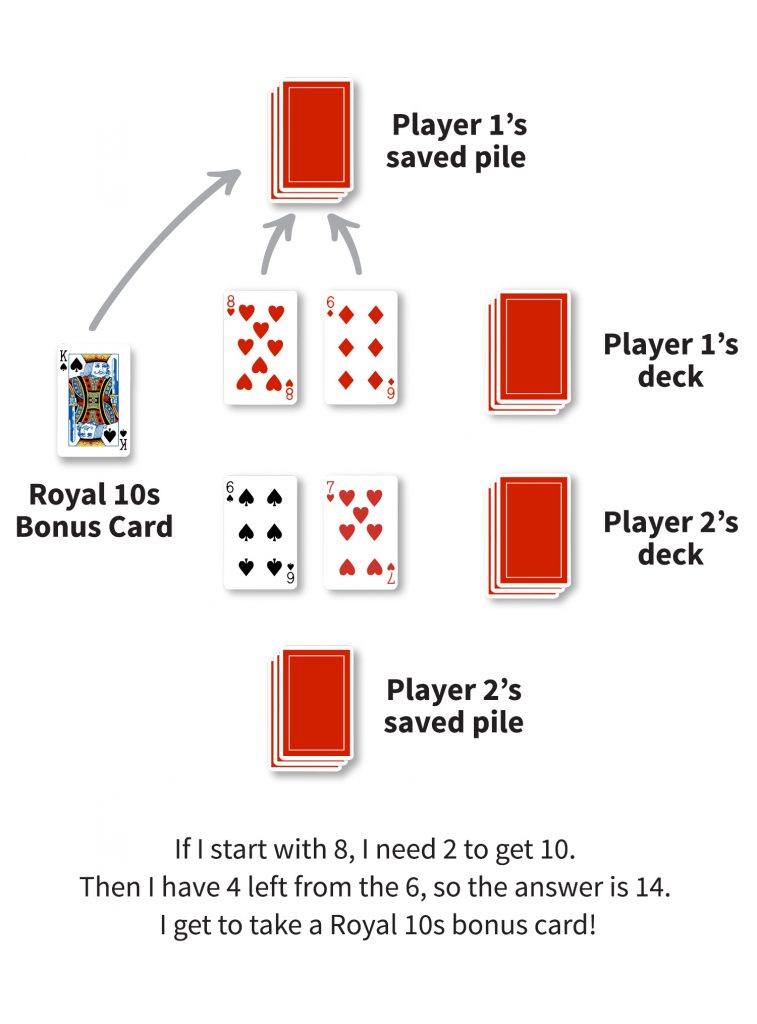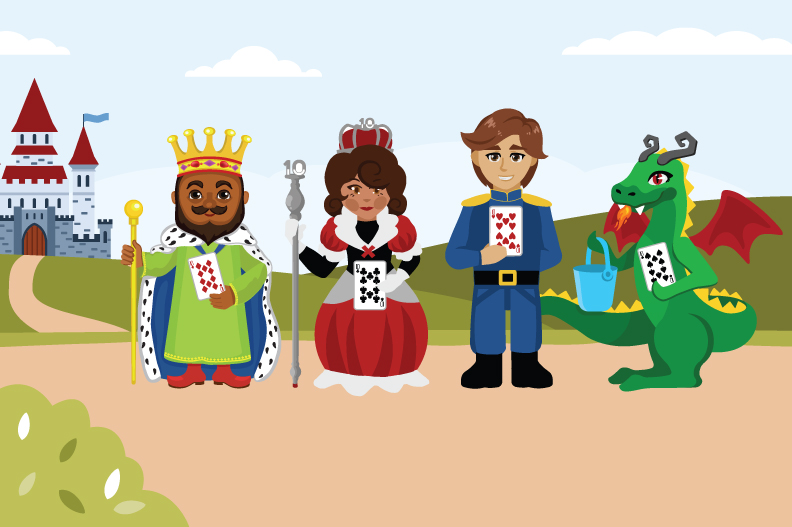Activity Summary
The goal of this 2 player game is to add larger numbers together correctly so that you get to keep the cards in a saved cards pile. Earn a bonus card by using a special strategy. Whoever gets the most cards wins the game.
Instructions
Setup
- Be sure to shuffle and sort the cards before beginning.
- Place all Kings, Queens, Jacks, and 10s in a pile in the center. In this game, all these 10s and face cards are considered equal to 10 and are called the Royal 10s.
- Remove all the Ace, 2, 3, and 4 cards from the deck. Pass out all the remaining cards (cards 5 through 9) number side down so each player has an equal number of cards.
Play
How a Turn Begins:
Player 1 turns over two cards and adds the two numbers to get the sum, and then puts the cards in their saved pile. If they can say how they got to 10 to solve the addition more easily, they get to take an extra bonus card from the pile of Royal 10 cards and put it in their saved pile. For example, a player could say, “For 7 + 6, I know that 7 + 3 =10. So if I split 6 into 3 and 3, then I can add 7 + 3, and have 3 left over. So, 7 + 6 = 10 + 3 = 13.” If player 1 adds the two cards correctly but does not use a 10 fact to do so, they do not get the extra bonus card.

How a turn ends:
When player 1 finds the sum of the two cards correctly and states the way they got to the sum, it’s player 2’s turn.
How the game ends:
The game ends when there are no more cards to play. At the end of the game, the players count their own pile of saved cards.
Tips
Read the Mini Story
- Make playing even more fun by telling a story about the game: 10 is such a beautiful number. The whole Royal Family loves 10. They think of 10 as part of the Royal Family because 10s help them solve difficult math problems. See how getting to 10 can help you solve hard addition problems when you play this card game.
Support Learning
- To solve getting to 10 for teen numbers, you could say, “Do you know the rule about adding 10 plus another number? Ten plus a number equals the number with a 1 in front of it. For example, 10 + 6 = 16.”
- For children who know some math facts, you can help them use lots of the math facts they know to solve the more difficult problems. For example, children often know their doubles. So when trying to add 6 + 5, you could say, “What is 5 + 5?” After the child answers “10,” say, “You have 6, which is one more than 5, so what is 6 + 5?” Help them remember other math facts they may know.
Adjust the Challenge
Make It Easier
- Use getting to doubles instead of getting to 10 to solve.
Mix Things Up
- Have players figure out how to get to 10 in different ways.
Make It Harder
- Use three cards rather than two.
- Play with all the cards rather than just numbers 5 to 9. Have players figure out how to break down the addition problem into simpler problems, using other math facts to solve it in addition to getting to 10.
What to Play Next
Congratulations, you played the last card game! Now you and your family can make up your own card games.
